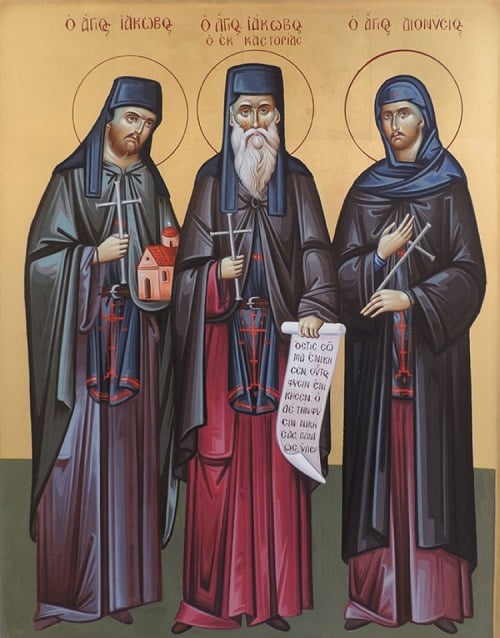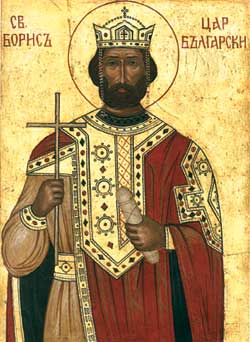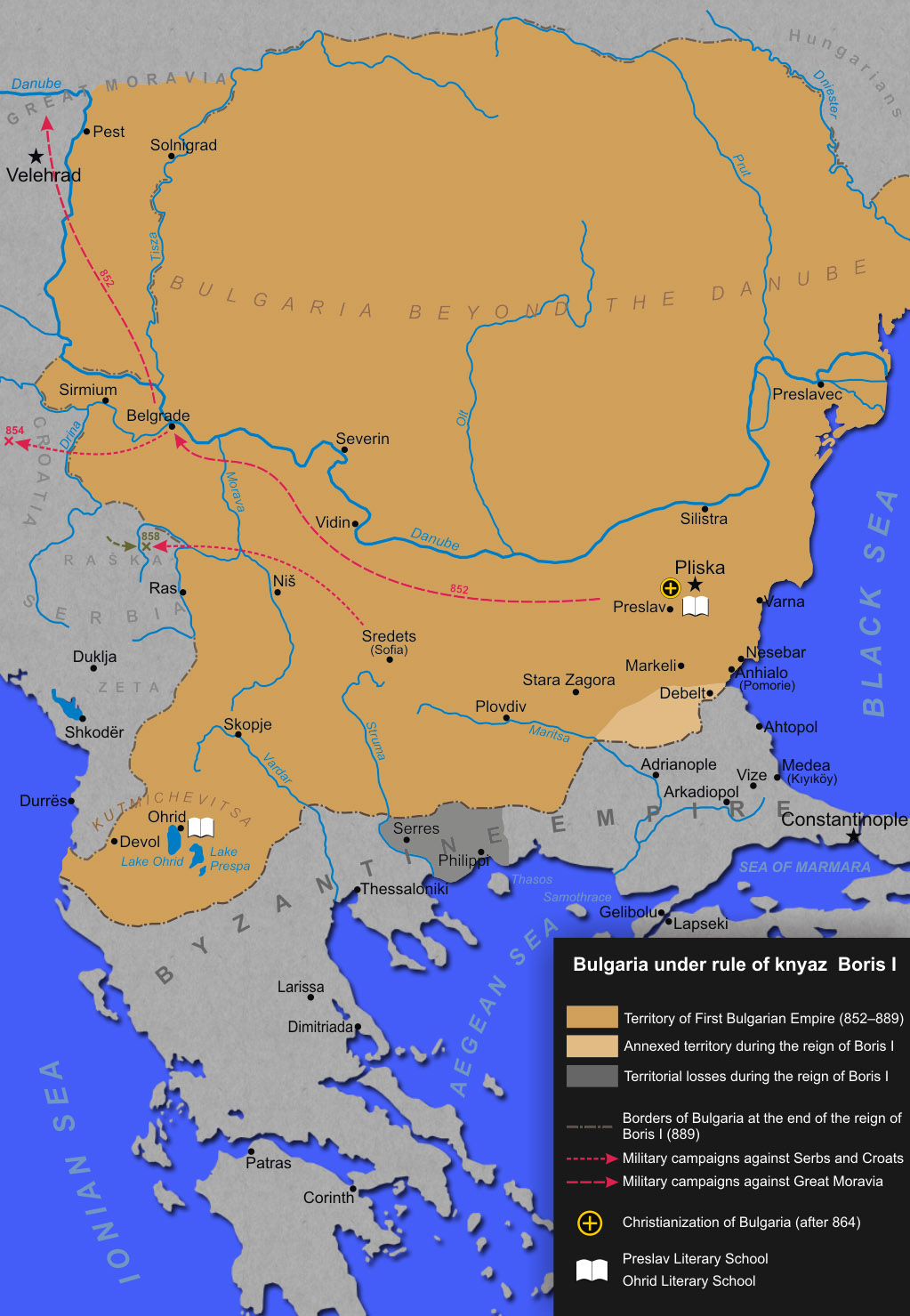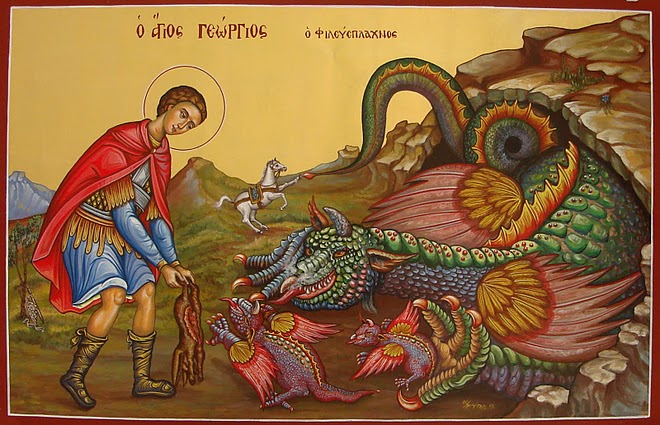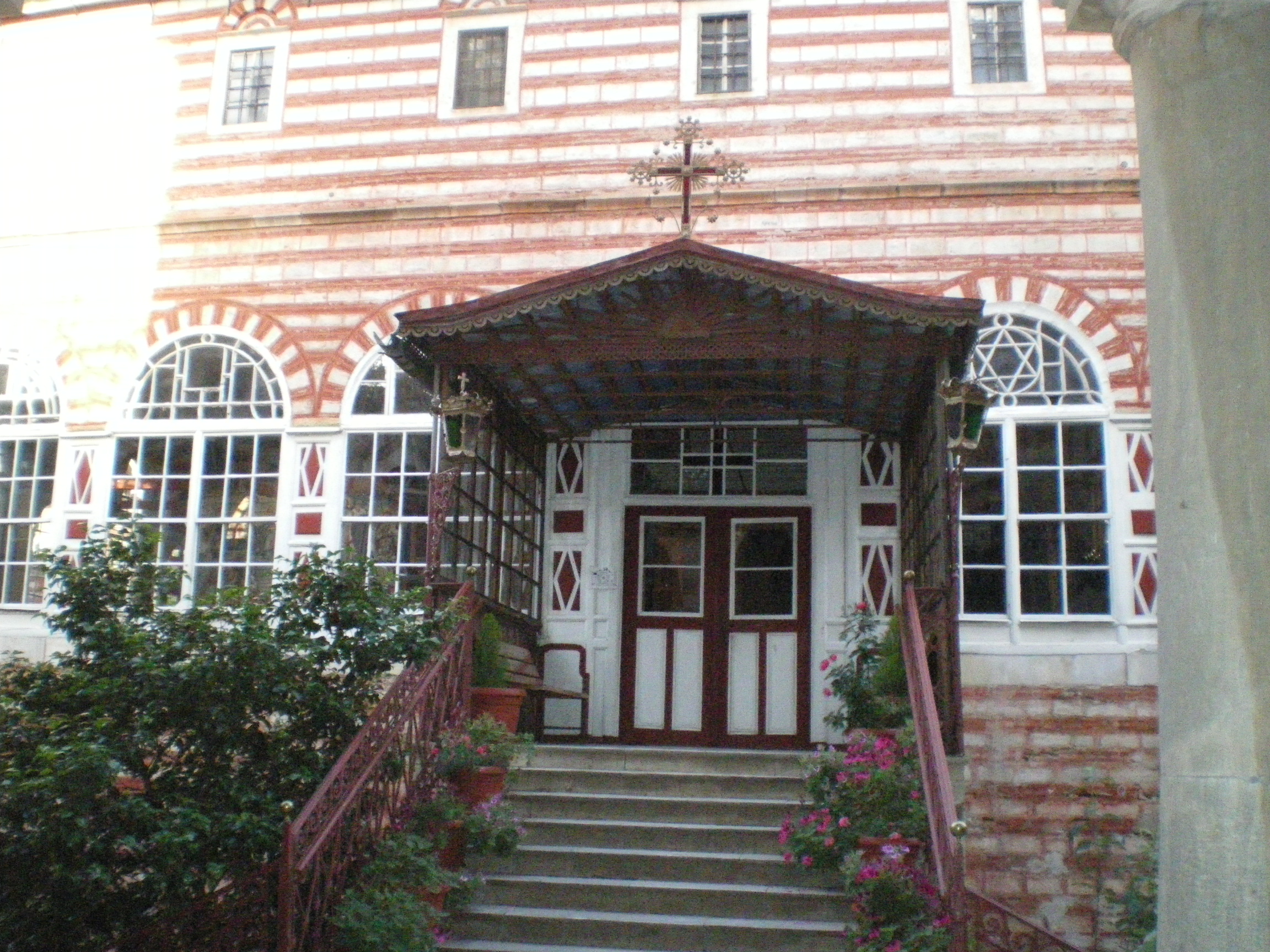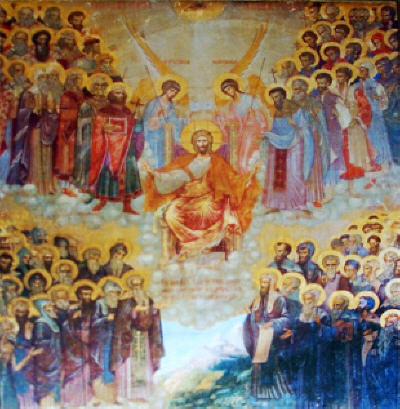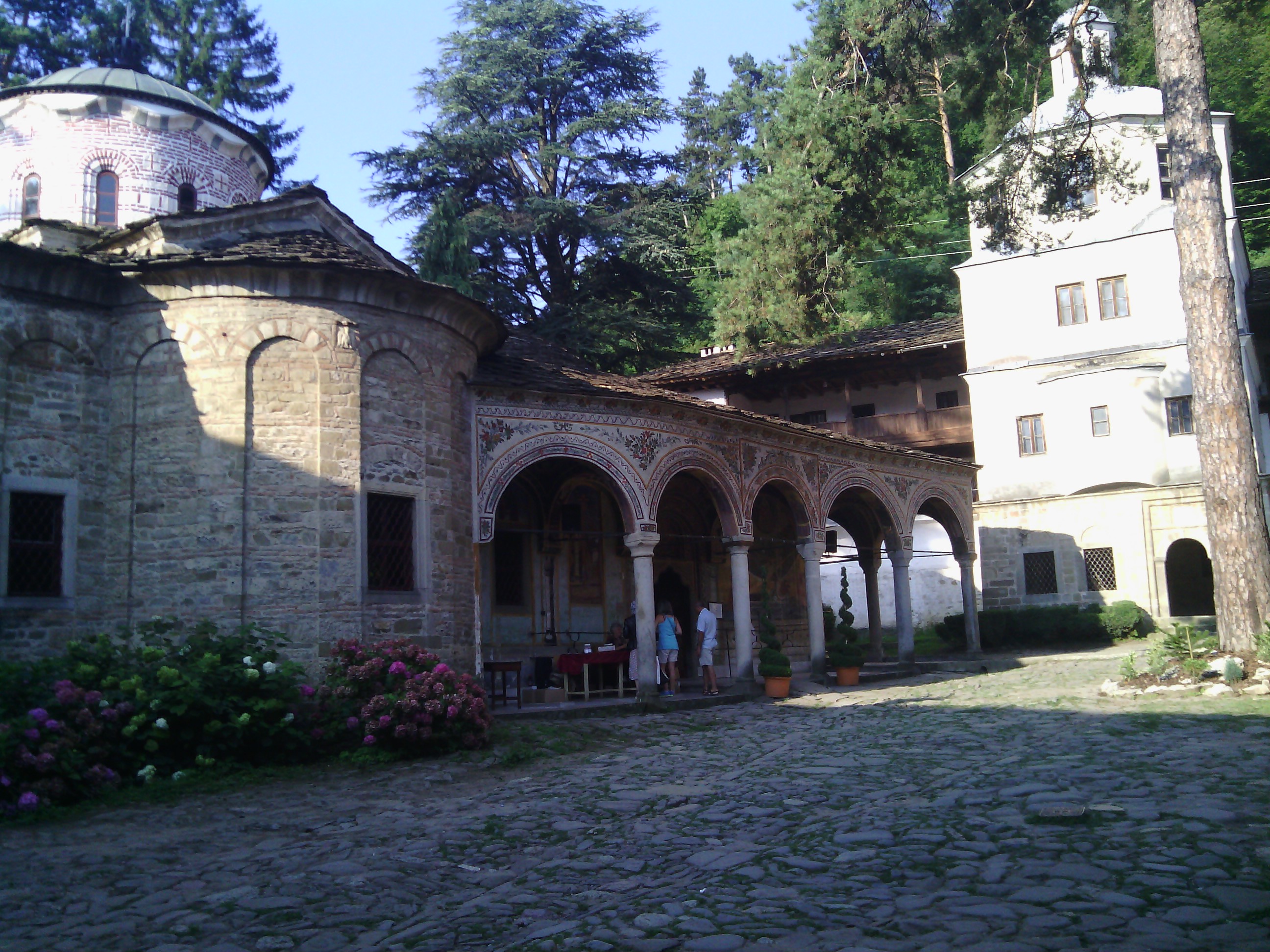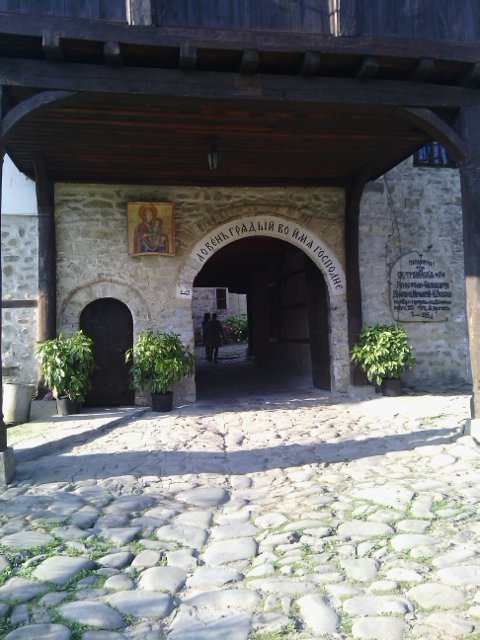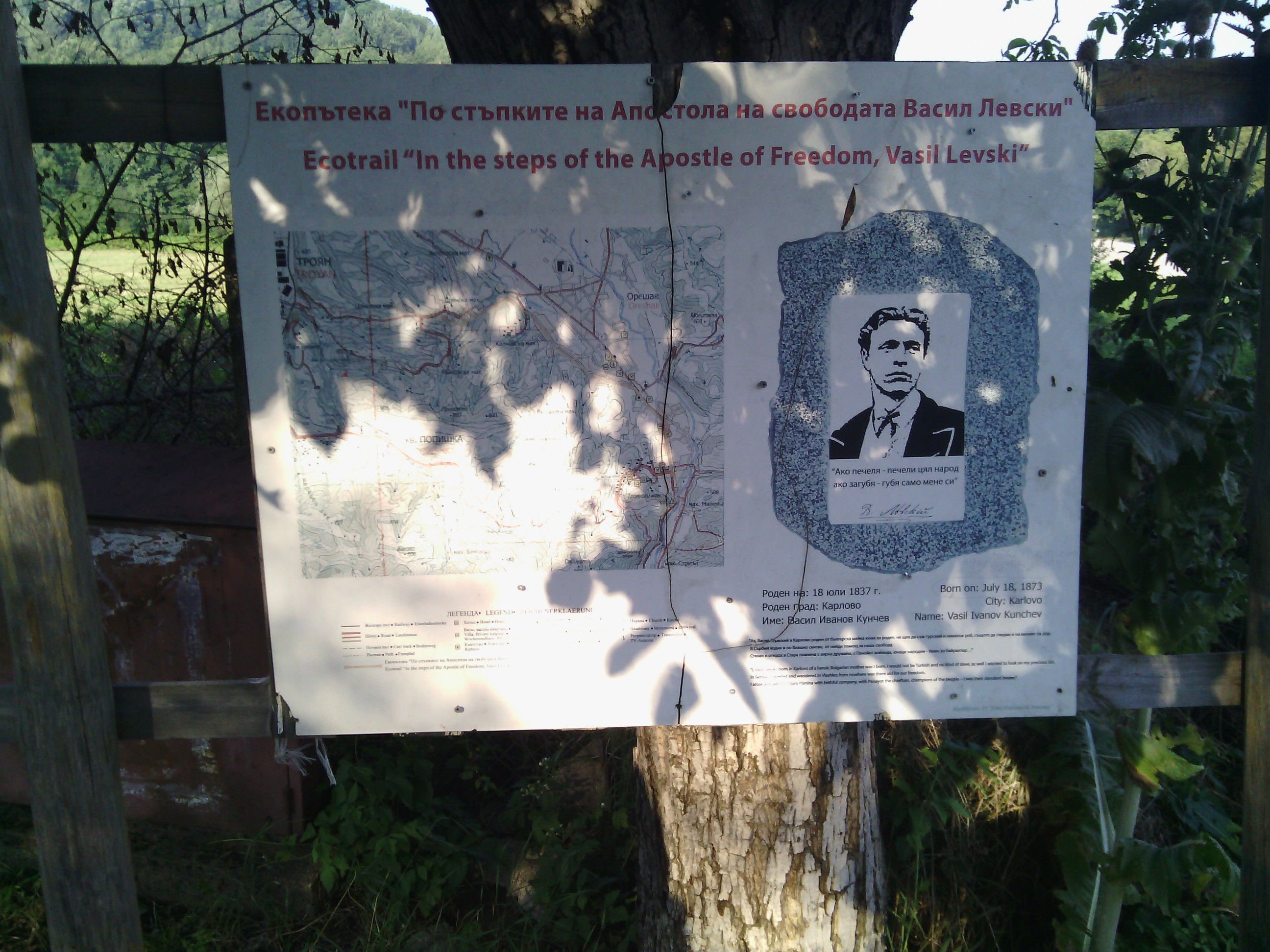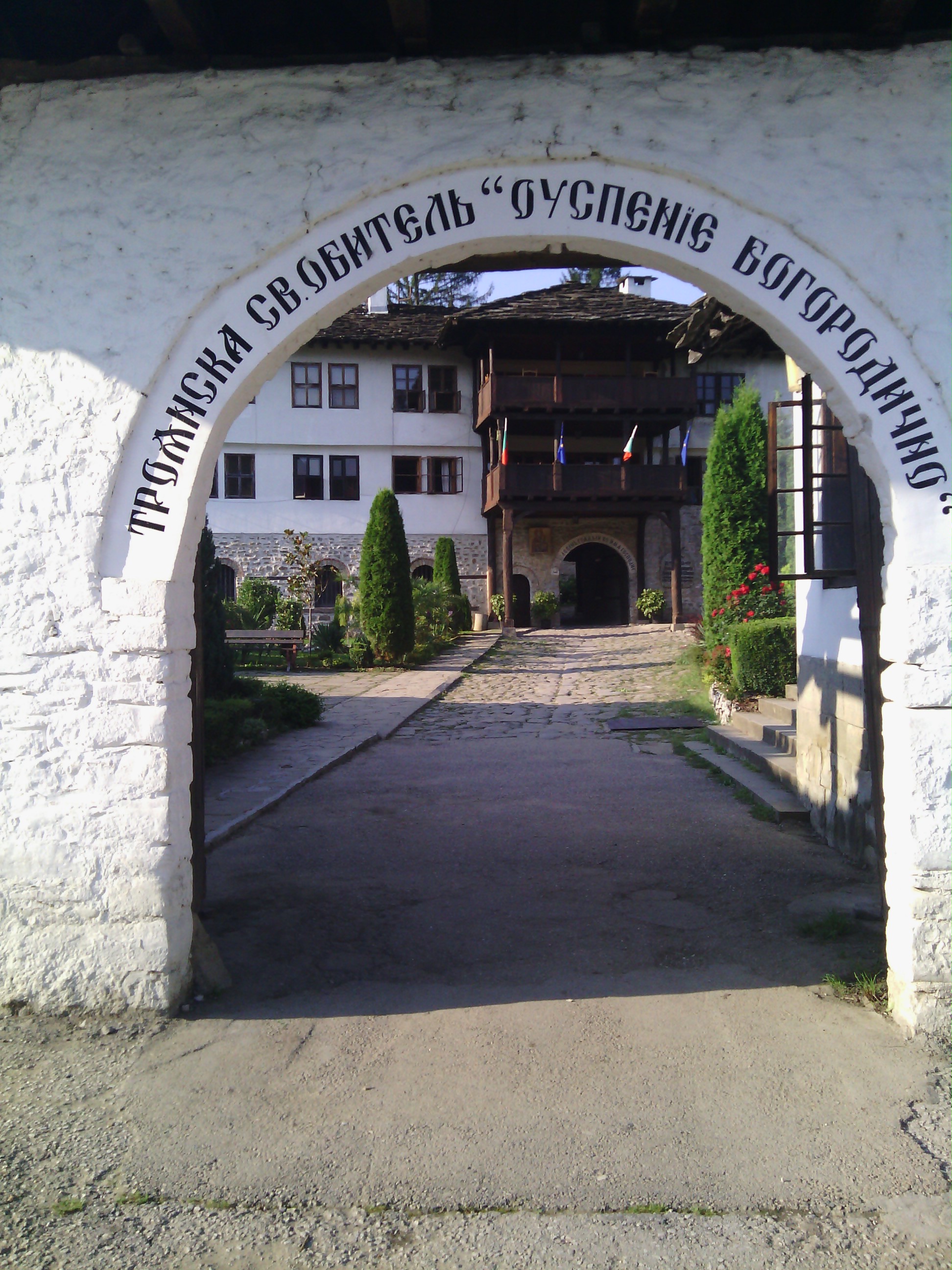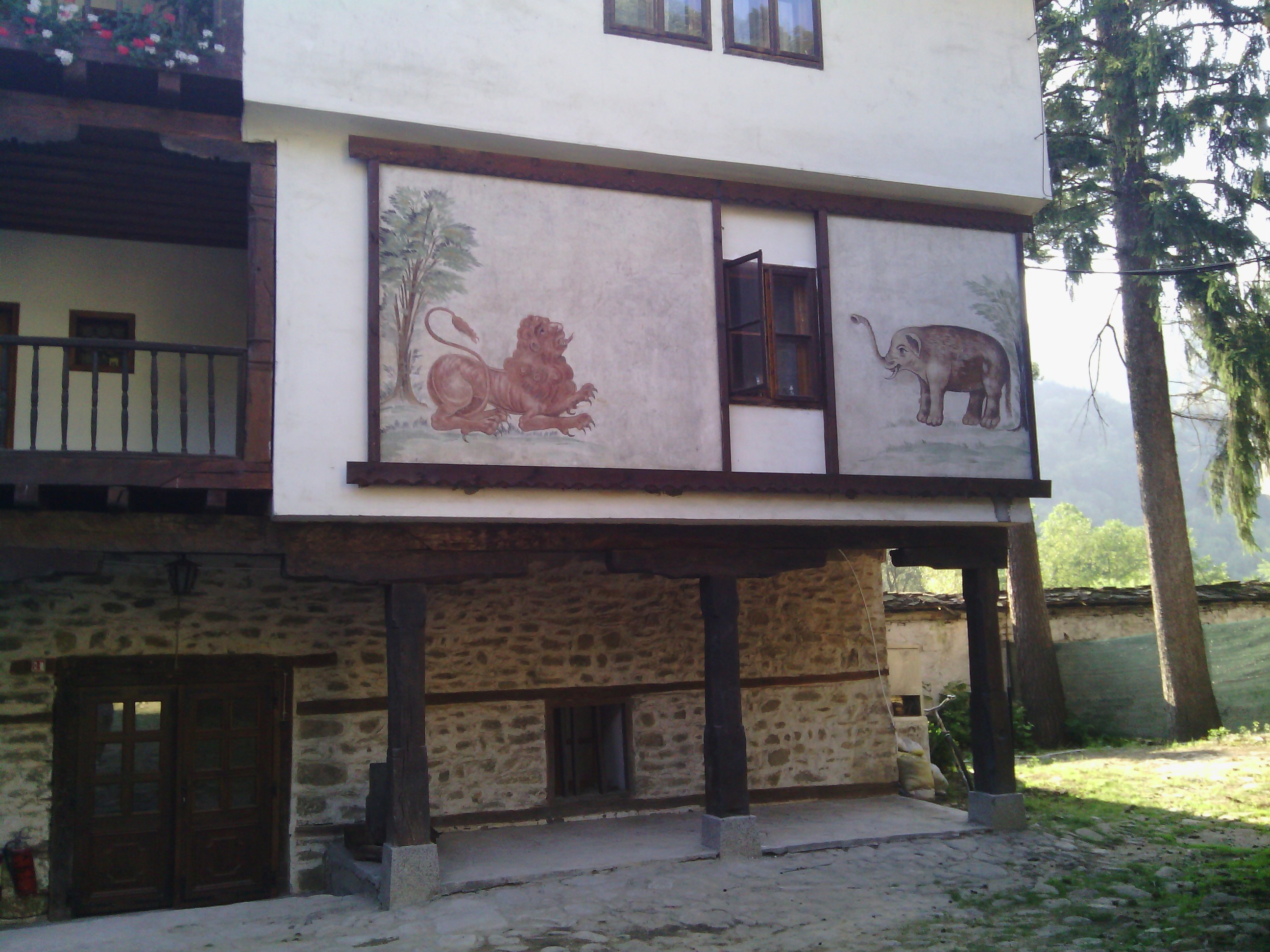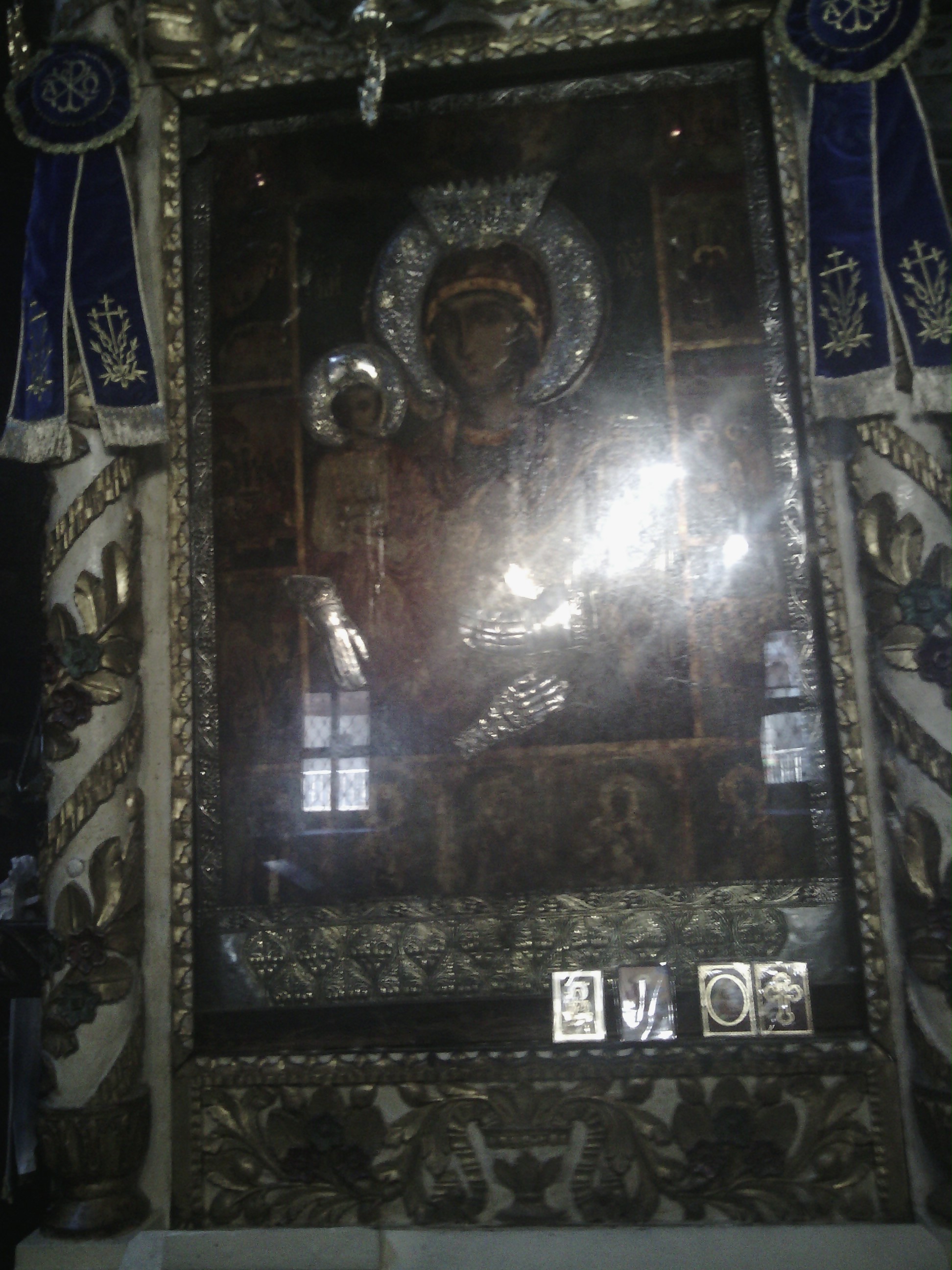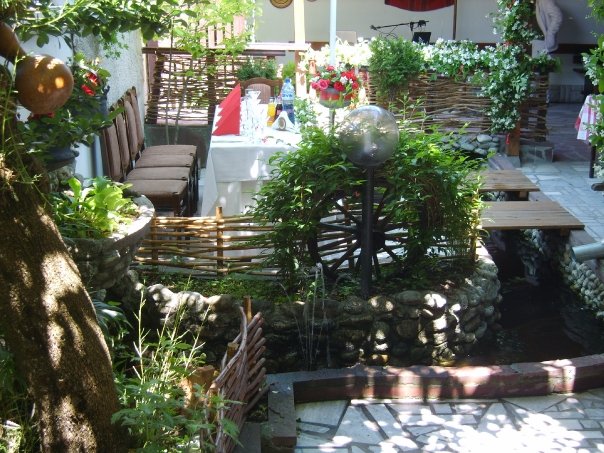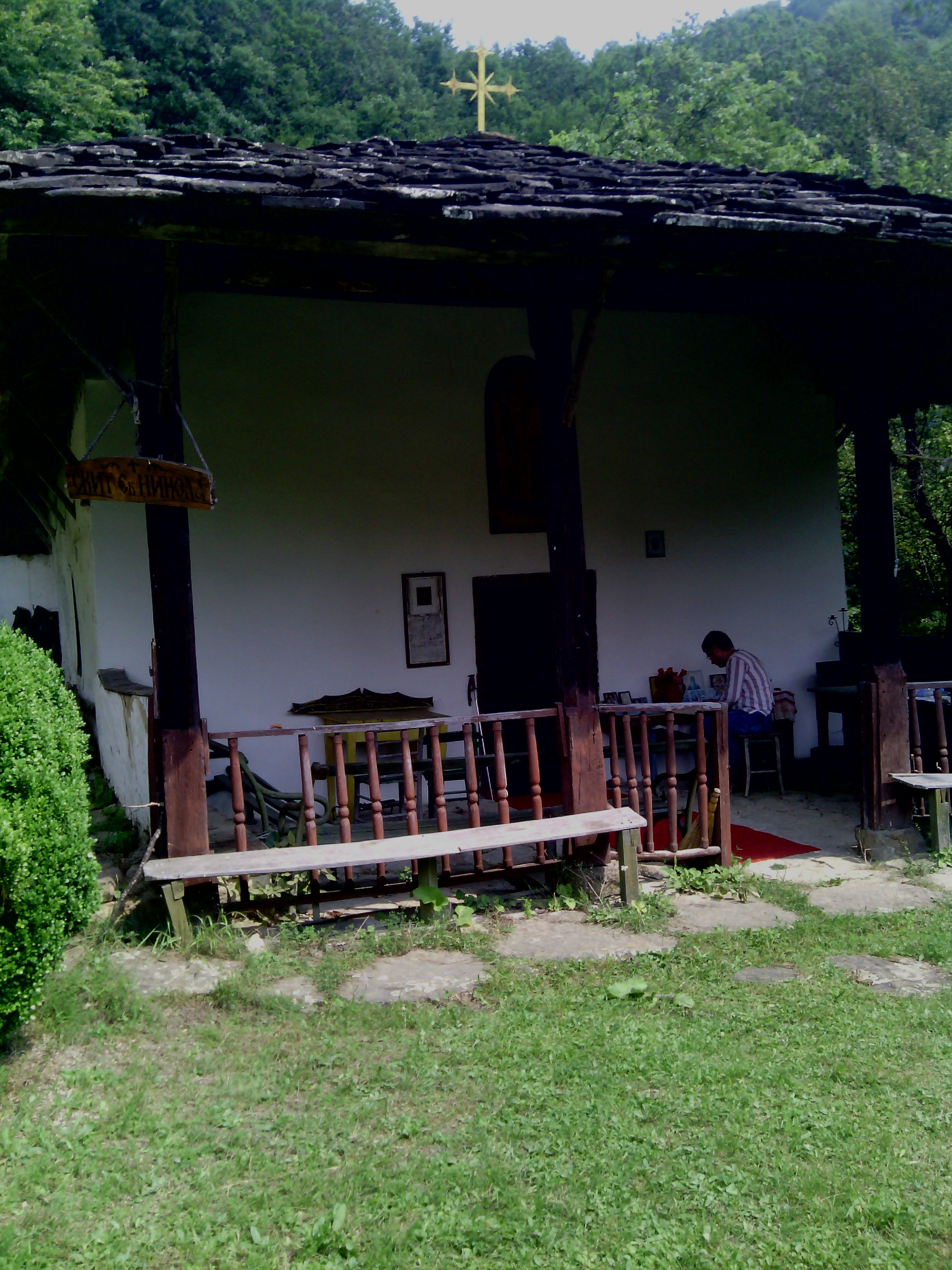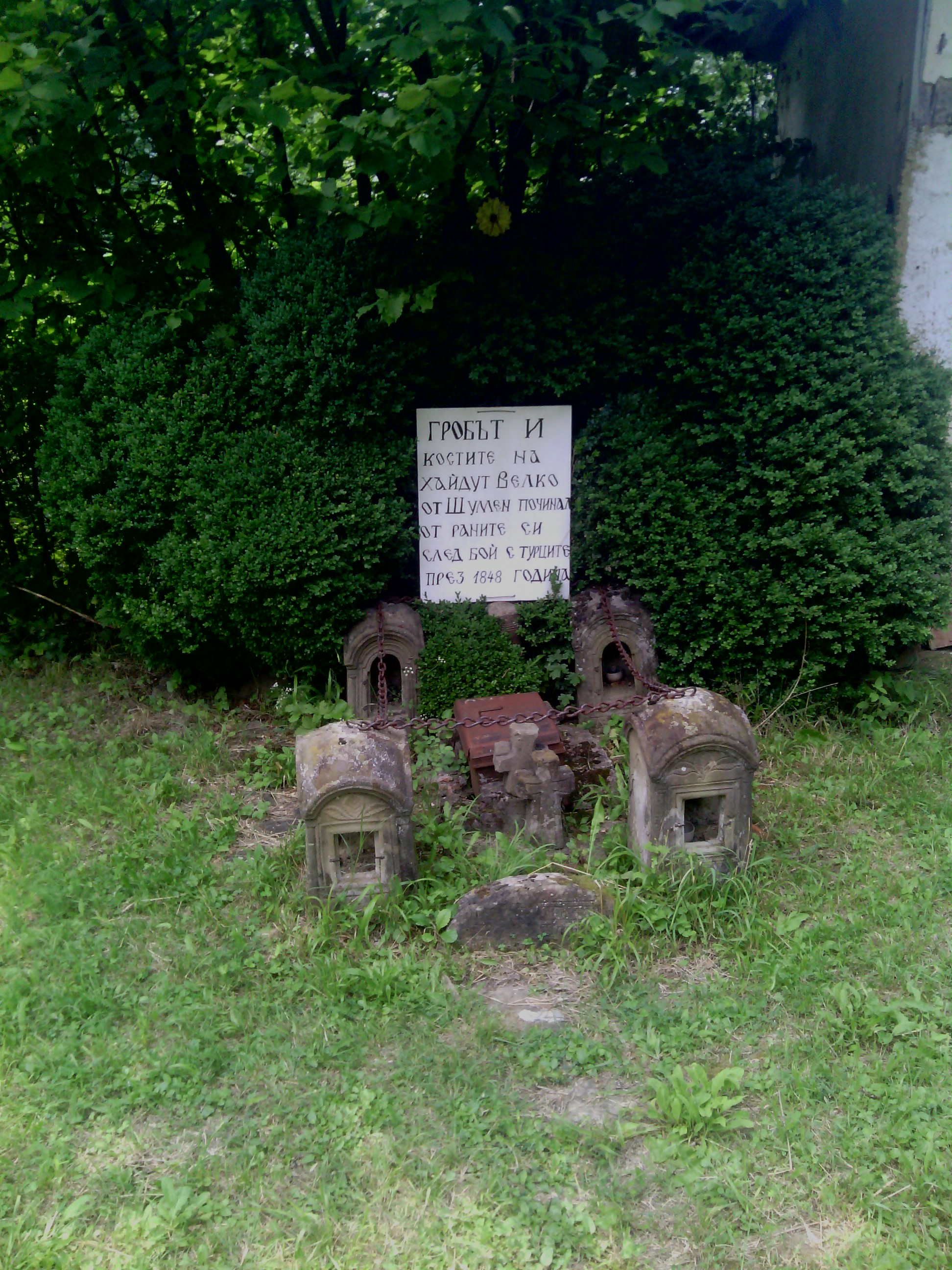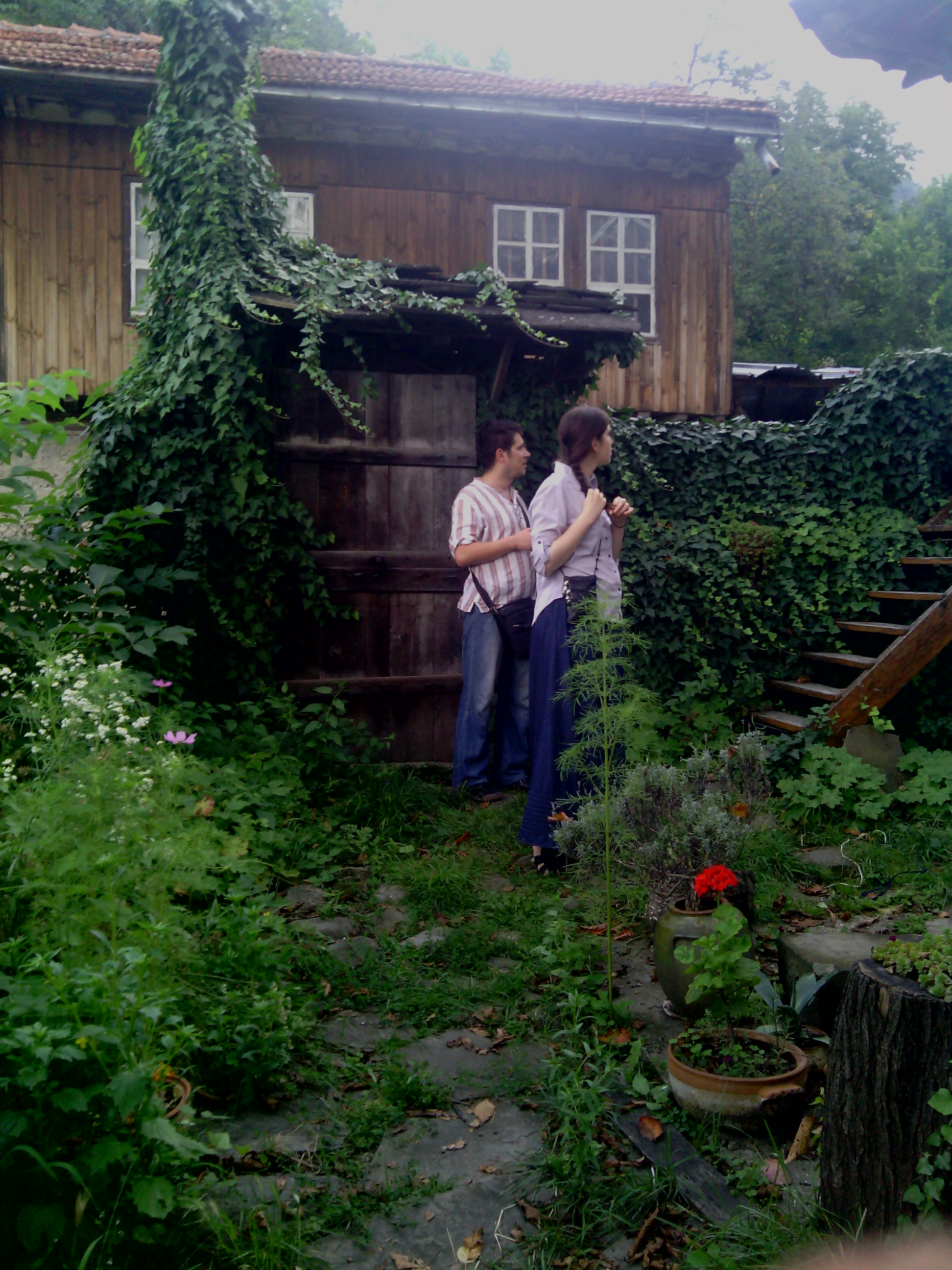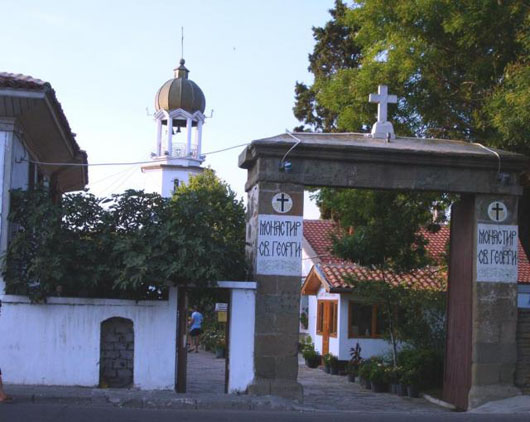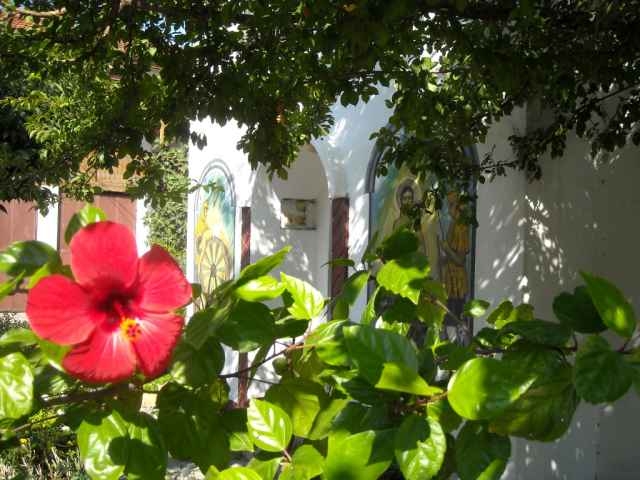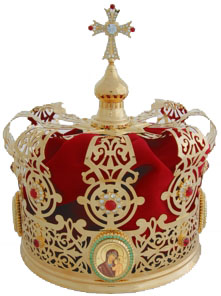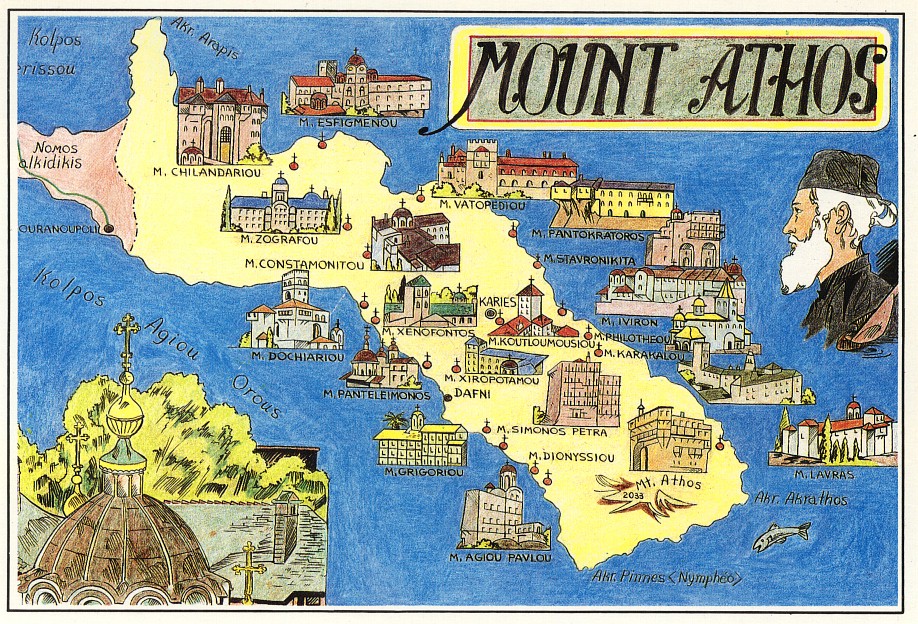
By the mercy of the most holy Virgin Mary, I had the opportunity to be for 2 days and a half to the second most holy place on earth after Jerusalem's (Holy Sepulchre Church of Christ Resurrection) and biggest monk governed republic on planet earth ( Άγιον Όρος ) Agios Oros Athon (Holy Mount Athos) – Светая Гора Афон – Света Гора Атон. Holy Mount Athos exists as a large monks community since 96.
To visit Mount Athos, the general requirement is to be orthodox christian only 10 visas per day are issued for non-orthodox pilgrims.
This immersely blessed place on earth can be entered only with a special monastery issued Visa (Diamontirion)
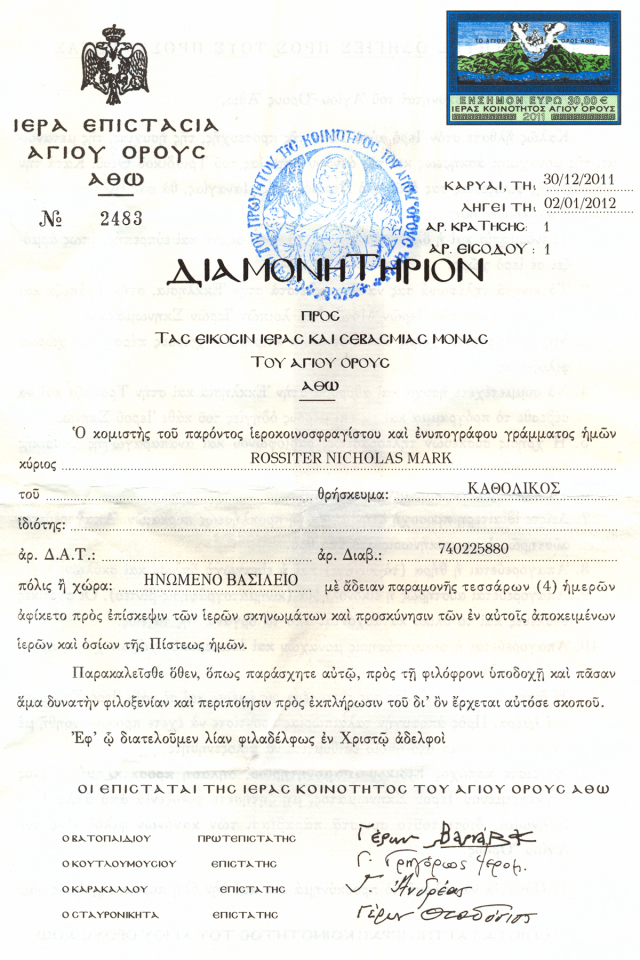
There is a special procedure which usually takes up from 1 month max to 2 weeks min to receive such a Athos visa. The procedure to receive Visa for Holy Mount Athos includes sending of a fax to the Bureau of Pilgrimage in Thesaloniki (Solun) with a copy of the ID Card (Passport) the tel. number to send the fax to plus.
In fax message should be included the desired monastery to visit and the stay period. Visa which is usually issued for 2 / 3 days period costs 25 euro. There is a daily quota of visits to be issued which is about 100 visas per day.
People who want to stay for more than 3 days in monastery has to follow special obediences (work given to pilgrimage inside the monastery).
Extensive information on how to visit Holy Mount Athos monks republic is on holy mount athos website.
Diamontirion is given only to man (only man can visit holy island), because the Mother of God The Holy Virgin Mary said she will be the only woman on this island unto the end of the world. There were a couple of times through out history from the IX-th century from which Holy Mount Athos exists as a monk republic in which woman try to enter the island, but such attempts failed and usually woman who tried to break out the island female enter prohibition (known as ABATON) get severely sick after that and couldn't get well for a long time some died some female after serious redemption confession and taking the holy sacraments recovered by the mercy of the Virgin Mary. There are already several stories of woman who tried to enter the island dressed as men and which have suffered from the quick heavenly judgement and later told the world their stories to warn other woman from trying to enter Athos which is the most eastern part of Chalkidiki peninsula … It is curious fact Holy Mount Athos is the one and only place on earth existing prohibited for woman.
While talking about woman it is a curious fact that the only woman that are allowed being iconographed in Holy Mount athos due to rule are the Most Holy Virgin Mary, The Anna and the Hermit Saint Mariya of Egypt. First monk is said in Monastic Chronicles is Protos in y. 908.
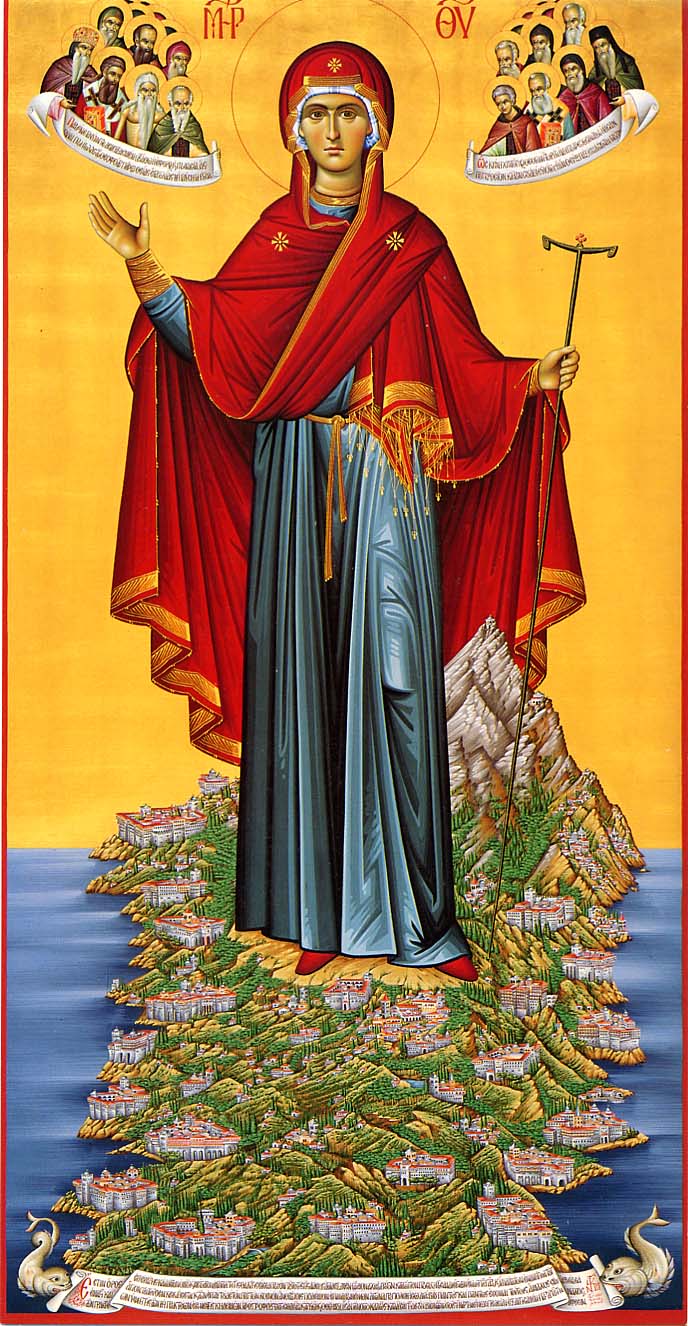
The region is governed by the "Holy community" – every monastery from the 20 orthodox monasteries (actually the monasteries are 21 but one is schismatic with so called Zealots, therefore not counted).
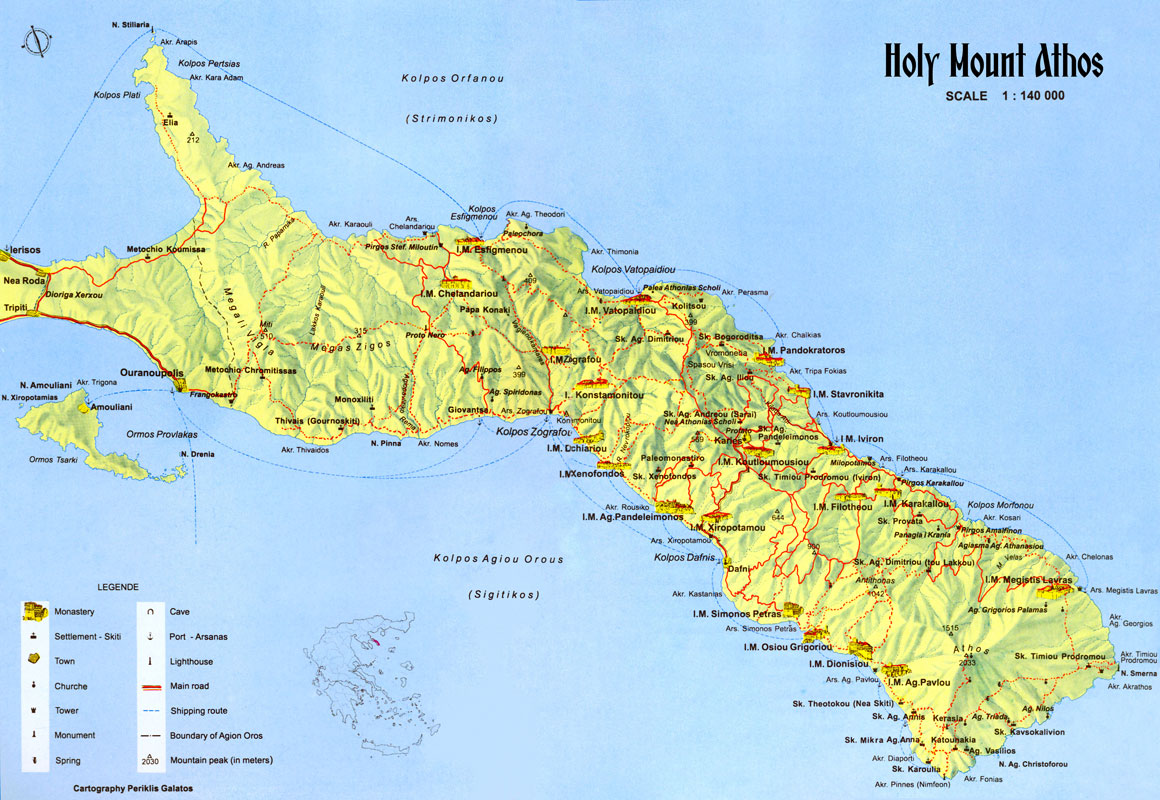
There are (Greek, Russian, Bulgarian, Serbian) monasteries as well as Sketes, Cells, small chapels of other Orthodox nations – e.g. Romanians, Georgians, Macedonians, Monte-Negro etc. Holy Mount Athos monasteries are under the ecumenical Patriarch of Constantinople – currently patriarch Bartholomew, however the patriarch is not having power to decide anything the monasteries or the monk republic and he is more than a public person with no authority over internal island monks life.
Entrance Holy Mount Athos is possible only through a small ship due to monks republic governing law. Boats transport people with issued visa only from Ouranoupolis port everyday from Monday to Saturday, there are at least 2 boats going to Agion Oros – one in 06:15 and one in 09:45 which costs 6.30 euro per person.
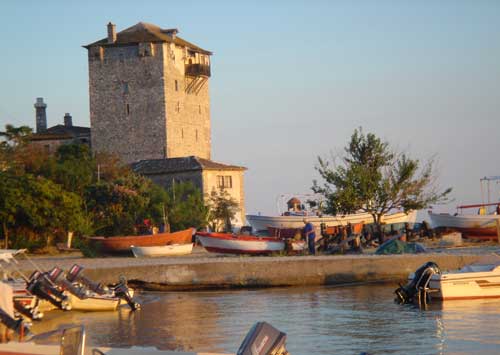
For people who want visit Holy Athos by airplace, Ouranoupolis is located 120 km by car or bus from Thesaloniki Airport so you should fly to there. We have travellet to Uranoupolis by car from Sofia – it is about 6 / 7 hours driving – only 631 km. Crossing the border from Bulgaria to Greece is very quick a passport check is made only one time on the border. Once arriving to Ouranopolis – one have to park somewhere, there is cheap paid parking only 5 euro a day, where one can park (nearby the port from where ship departs). To get the Athos visa there is a special Bureau where you go with you present your password and receive the visa. Visa is received in a very speedy manner it takes up to 30 seconds after showing the pass, you're name is checked and if visa is already present and printed for you you're handled the diamontirion.
There are also privately owned boats (scooters) which can transport up to 4 people – in case there are is not enough space in standar boats, but this are really expensive something like 120 EUR.
The Boat-Ship travelling from Ouranoupolis to Agios Oros is named after saint Anna (The Mother of Most Holy Virgin Mary – In Greek Panagia).
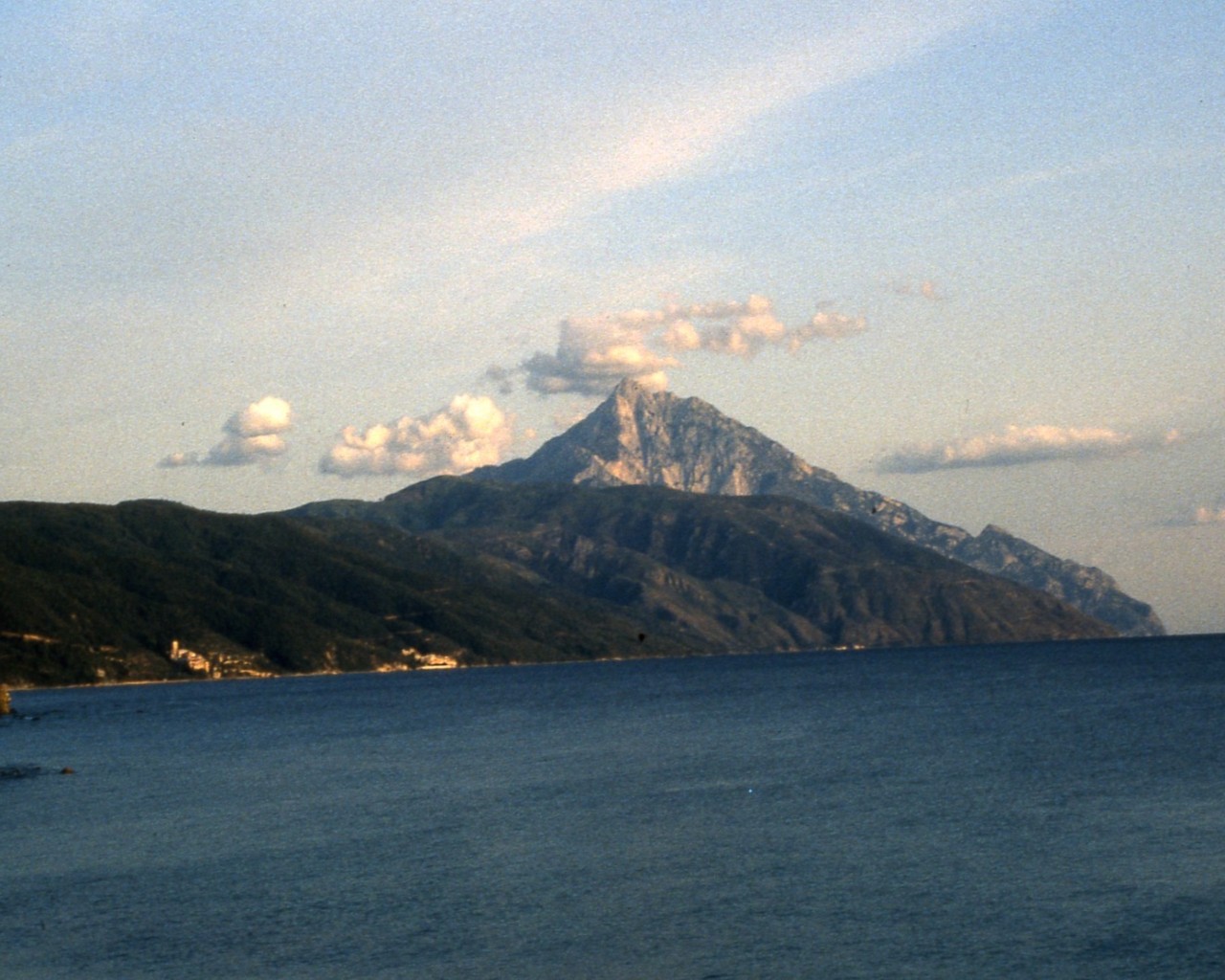
The ship is travelling only on days where the weather is suitable for travelling so some certain days there are no cruises to the garden of Holy Theotokos. The ships cruising back from Holy Mount Athos to Urunopoli schedule is also twice daily – and are the same ships travelling in the morning. One is saling back in 12:00 (stopping on each of the near coast monasteries ports) by reverse order and one in 16:00. Sometimes the ships doesn't stop one some of the ports and you can't go back to Urunipoli, when the ship has to many people or for some other God known reason.
On the ship of one moun Athos one can see a truly international monks community – there were literally Orthodox Christians monks from all around the world and people from all around the globe that has faith in the Lord Jesus Christ, there was even an African priest and a batushka (priest) from Cyberia. Most of the people on the boat were pilgrims from many nationalities but for major Church feast like The Dormition of the Theotokos (Virgin Mary) which is each year celebrated on 28 August a lot of monks from many country come to Athos to venerate the Mother of God and receive heavenly blessing.
We have stopped to leave some laggage on the Port of Bulgarian Monastery (located 7 km from Zographou Monastery – saint great martyr George (Свети Георги Зограф) and then continued to port of Dafni. Going back from the ship one can feel the abundant heavenly grace and the heavenly protection of the Theotokos. There were a small caffeteria where we drink Greek Coffee (a coffee prepared on a hot sand – very much like the Turkish coffee) and eat fasting food something like Bulgarian Banica but instead of cheese it is filled with baked pumpkin.
There are small bus-es moving in Mount Athos which brings to some of the more famous monasteries on Athos – bus ticket is 3 euro. However as we wanted to visit more monasteries and because every step made on Agios Oros is a blessing and as the elders say Agios Oros is to be walked, we choose to walk. We took a steepy pathway leading to Xiropotamos. Xiropotamous is famous from the XII century Crusaders times, Roman Catholic Crusaders has invaded the holy mount and tried to turn monks to Roman Catholicism by force, those who rejected to receive Catholic faith were killed by Catholics – became martyrs. Some of the Monks of Xiropotamou, decided to save their lives and accepted to recognize the authority of the Roman Pope, Roman Catholics entered the monastic Church and served a Roman Holy Liturgy in the moment where the Pope was mentioned in prayers as a head of the Church, the Church walls fall and killed most of the people in the Church, those who survived, escaped and converted back to Orthodoxy – by this God clearly showed which is the real Christian faith. As all monasteries on Athos Xiropotamou's brotherhood has holy relics – the biggest holy relic of Xiropotamos is about 20×5 cm sized part of the True Holy Cross on which the Lord Jeus Christ was crucified.
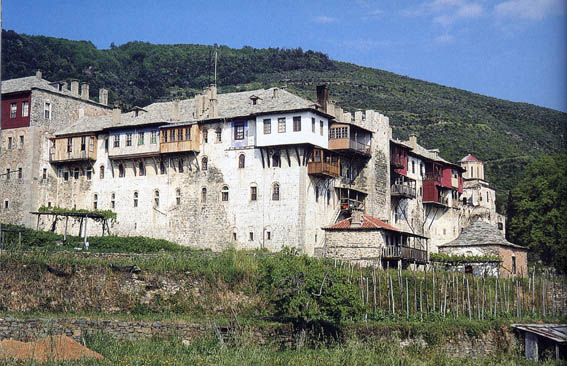
Xiropotamou was founder in 10th century, and is dedicated to the Forty Martyrs of Sebaste.
The monastic walls were closed when we reached there around 10:00 in the monastery receives visitors only 2 times a day one in 11:30 and one in 16:00. Waiting for to become 11:30, we walked around the monastery and saw the small chapel the grapes, the monks fruit gardens all is exceptionally beautiful – the monastery is quite big. In 11:30, when inner monastic walls opened we were invited into Arhondarik (The Monastic Guest-house), where the monk bring us immediately a cup of fresh water, Turkish delight and 50 grams of Greek national drink – Uzo 🙂
We met two other Romanians who wanted to also venerate the Holy Cross and we had a small nice chat with them in 11:30 the Church was opened and a priest bring us to a small square near Holy Altar opened a golden case with emeralds keeping the big piece of the True Holy Cross – it is an amazing miracle that for this 1980 years from the Crucifixion of the Lord Jesus Christ the wooden didn't rot but preserved – any normal wood decays for such a long time! God's grace (The Spiritual Power) that one feels nearby the Holy Relic is amazing. The monastery is also famous with an orange tree giving a miracle making (healing) fruits, the three failed to give its fruit when Catholics came to Holy Mount Athos and started giving its fruits again after Catholics leaved Agion Oros. We saw a couple of trees with Orange fruits on it but was unsure which of the trees is the actual tree about which monastic tradition tells.
After the monastery we catch the way to Karyes (Καρυές) which is like Capital town, seat of the administration and has the name "Megali Mesi Lavra" (Big Central Assembly). – they have Agios Oros Police, Hospital, Bakery, a Caffeteria, Public Toilet, 2 small shops in Karyes is also located the major church at Karyes, the Protaton, which is the church of the Protos, or president of the monastic community. It is Curios fact that initial "rules of the republic" were written in XII century by saint Archibiship Sava creator of Serbian Orthodox Church who lived in a small cell in Karyes (Карея).
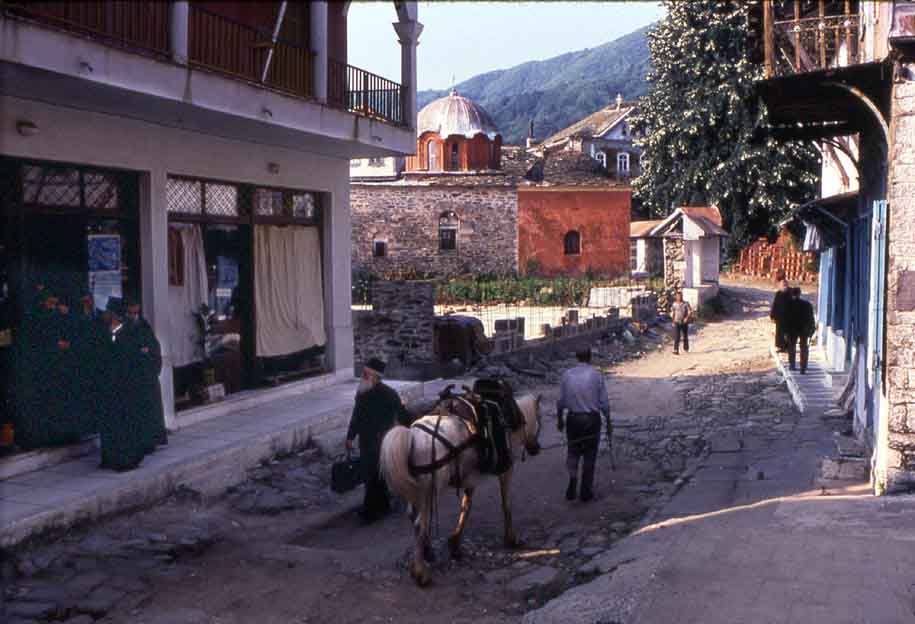
In the Church on the picture is keeping the famous miracle making holy icon "Dostoyno Esty" / Достойно есть in Greek Panagia known as "Axion Estin" meaning It is Truly Meet . This icon is so important and connected to Orthodox Christiainity, that it has a Troparion included to be sung on each Holy Liturgy in praise of the (Theotokos) Mother of God and sung on almost all kind of morning and evening services or private prayers, it is curious fact that the icon before its glorification was situated in a small monk cell near monastery Pantekrator (All Keeper). There is a notable miracle how the second part of Axion Estin Church troparion was given by an Angel supposedly given by Archangel Gabriel. At the Axion Estin cell in year 982 was living an old virtuos monk Gavrail with his desciple, that night Gavrail was outside of the cell to nearby monastery for all night vigil leaving the young monk (also Gavrail / Gabriel) at midnight a stranger come knocked on the door and in Agios Oros tradition was received as a stranger, the stranger also went for the night vigil in the morning the stranger and the old monk sung together troparion in glorification of the Holy Mother of but the stranger sung it differently adding few words to the already well known and established church song lyrics, the monk liked the song so much that he asked the monk to write down the lyrics, they didn't have a pen and paper and the stranger took a piece of stone and write down the lyric using his finger! The monk stunned realized the stranger is actually an angel and a short after the angel disappeared.
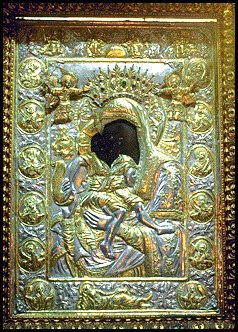
Here is the Dostoino Esty Troparion lyrics text as given by the Angel in Church Slavonic, Greek and English:
Достойно есть Church Slavonic:
Достойно есть яко воистину блажити Тя, Богородицу,
присноблаженную и пренепорочную и Матерь Бога нашего.
Честнейшую Херувим
и славнейшую без сравнения Серафим,
без истления Бога Слова рождшую,
сущую Богородицу Тя величаем.
Axion Estin In Greek:
Ἐπὶ σοὶ χαίρει, Κεχαριτωμένη, πᾶσα ἡ κτίσις.
Ἀγγέλων τὸ σύστημα καὶ ἀνθρώπων τὸ γένος,
ἡγιασμένε ναὲ καὶ παράδεισε λογικέ,
παρθενικὸν καύχημα, ἐξ ἧς Θεός ἐσαρκώθη
καὶ παιδίον γέγονεν, ὁ πρὸ αἰώνων ὑπάρχων Θεὸς ἡμῶν·
τὴν γὰρ σὴν μήτραν θρόνον ἐποίησε,
καὶ τὴν σὴν γαστέρα πλατυτέραν οὐρανῶν ἀπειργάσατο.
Ἐπὶ σοὶ χαίρει, Κεχαριτωμένη, πᾶσα ἡ κτίσις
δόξα σοι.
It is truly meat English Translation:
All of Creation rejoices in thee, O full of grace:
the angels in heaven and the race of men,
O sanctified temple and spiritual paradise,
the glory of virgins, of whom God was incarnate
and became a child, our God before the ages.
He made thy body into a throne,
and thy womb more spacious than the heavens.
All of creation rejoices in thee, O full of grace:
Glory be to thee.
In shops it is forbidden to sell meat, because monks doesn't eat meat and meat consumption on holy mount Athos is generally forbidden. The only think closer to meat sold in shop is fish, octopus and other sea food. There is also a small shop selling Church / monk accessoaries, icons, prosphoras etc.
On the city center there is free drinkable water, each Monastery has a building like Embassy – which is both a monastery representative and a strangers guest-house (Konak). People who want can sleep a night in the Konak with a blessing, each Konak has a small chapel inside dedicated to Mother Mary or a certain saint.
On many places on holy mount athos there are springs with drinkable water so almost always there is a spring on every few hours walk in the mountain woods. About 10 or 20 minutes walk from Karyes, there is a Greek Monastery Koutloumousiou, the monastery has many miracle making icons and to me personally is very favourite place – Koutloumoush is famous with being the monastery where the Elder Paisios served as a monk for many years.
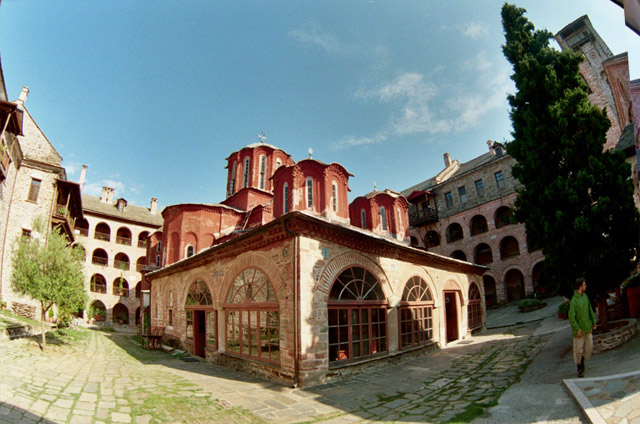
After praying there, on the road we saw a sign for the cell of Elder Gavrijl and after some time we reached a little house with a bench in front and around 10 people from all age waiting for the Elder to go out for a while of his cell and tell some spiritual advises.
For non-Orthodox Christians, we have Elders who have a very close connection to God and due to their holy living God has blessed them with the gify of claiorvoyance, Starets Gavrijl is said by many on holy mount Athos that he has the gift of clairvoyance.
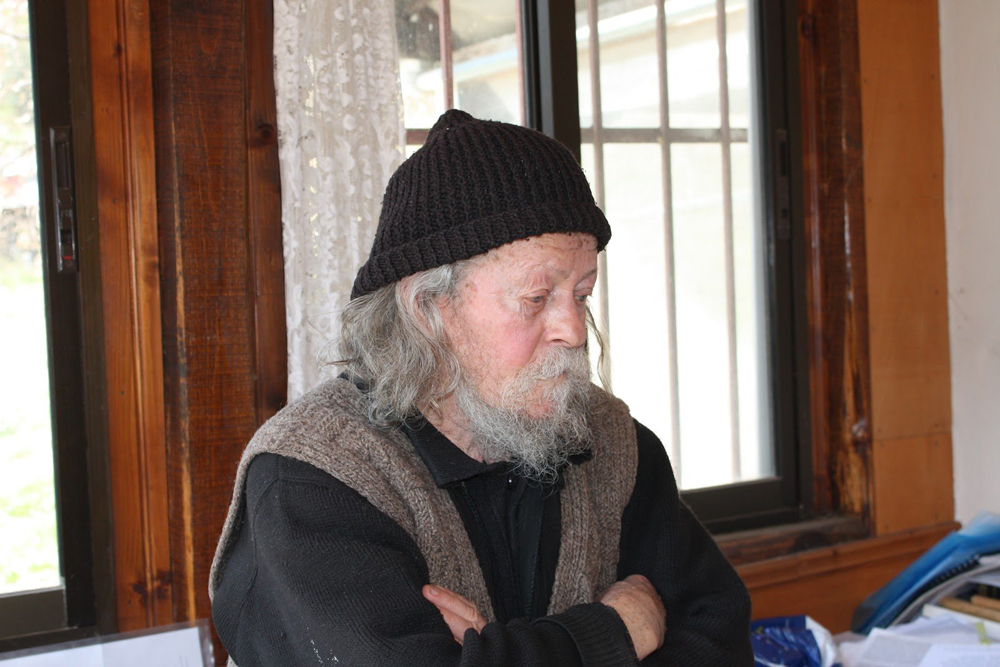
Elder Gavrijl speaks only Greek, so I couldn't undestand his preach, nomatter that even his presence made my spirit joy. After the preach we all took a blessing from those saintly living man.
I asked one of the Greeks to translate to me the Starets was talking about the Christian family and importance for husband and wife to be patient with each other, respect each other and truely love each other and most importantly forgive each other. He said that in this time it is of the main thing the devil wants is to destroy family and we have to not let family broke, he also said we should never quarrel infront of children, because when children grown they will do the same with their children.
I've asked the Starets about personal matters and he gave me the same answer as the Elder fr. Georgi of Jeglarci which is a proof fr. Georgi also have the gift of prophecy.
After leaving elder Gavrijl we headed to the monastery of Iveron to be on the all night vigil and the feast of Dormition of the Holy Theotokos. On the same way nearby 15 minutes away from the pathway we saw a sign leading to the cell of the Elder Paisios and we went for a pilgrimage there. After 15 minutes on a steep ways we reached in front of Elder Paisios small house. The house is now inhabitated by a monk who is still growing the same vegetable garden grown by Elder Paisios. The house is really small and the Starets lived in a small room 4×4 meters, the room has two big icons on the east just like a Church and light up night-light infront of the icons of Pantokrator (All-Keeper) Lord Jesus Christ and the Most Holy Theotokos, each wall in the small room has few icons hanging I remember clearly the icon of saint Arsenios the Great. On entrance, we were threated by the monk with Turkish Delight and a cup of water, just like the Elder Paisios used to while still alive. Turkish Delight (Lokum) was the most delicious one I ever eat and on my way out I asked the monk for another two pieces 🙂
Going out of Elder Paisios cell we walkted through the Athos mountain woods passing by parakleses (small chapels) and on many places there were wooden crosses and icons with lightning candles in front right in the woods. We met some Romanian group of pilgrims and had a little chat on the road, Romanians are very good people, all the day we had the blessing to meet mainly Romanians.
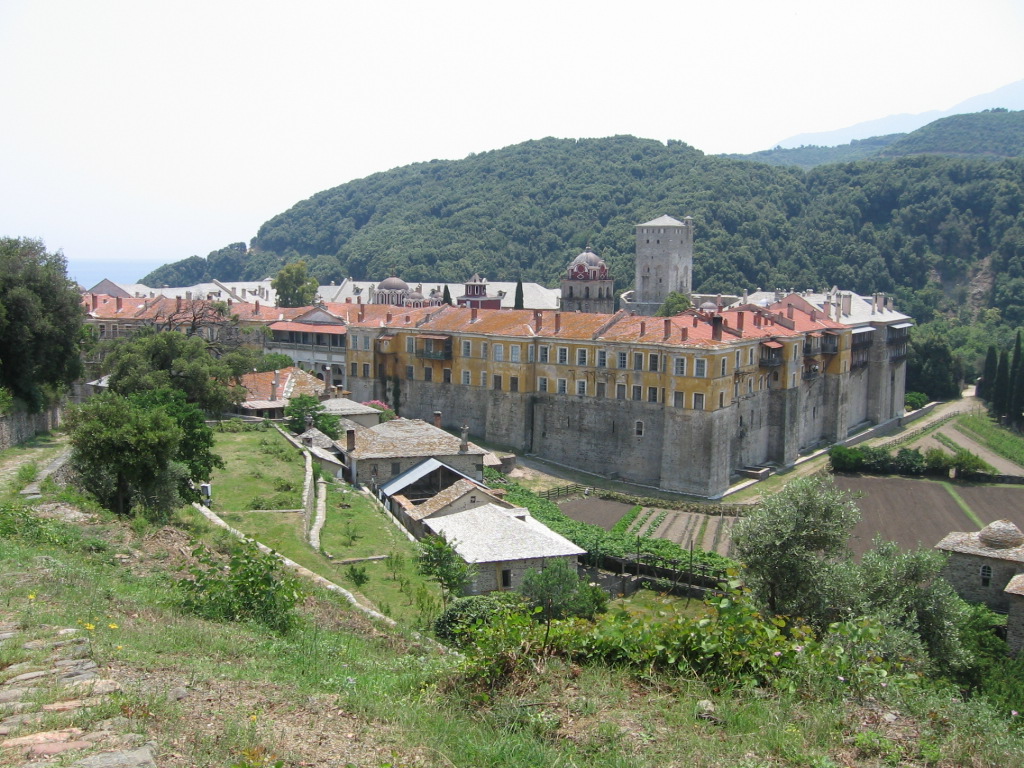
We reached in Iveron monastery (located nearby the sea coast) about 17:30 by God's mercy, the feast of Dormition had already begun there, it is an Orthodox Tradition to do a Lithia with the Miraculous Iveron icon of Most Holy Virgin also famous as Vratarnica.
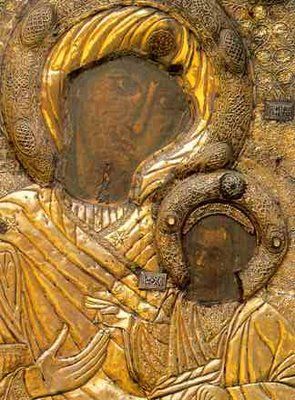
The monastery was full of people, there were probably about 800 people, probaly about 200 monks and priests were also there for the feast. It is a tradition that at that night the monastery gives a sleeping packs for all the pilgrims, so if someone feels to sleepy he can use the blanket and have a sleep on open air. There was an evening service just like it is done before Liturgy is served on next morning and right after the service, everybody present in the monastery was fed (all people ordered and had to enter 3 the monastic dining room divided by 3 waves). The food was some macaroni with some pieces of sea food (probably octopus), one tomato and 2 little pieces of watermelon. Even though the food was little it was enough to completely feed me plus it was so delicious you can't imagine, blessed (manastic food) is always more delicious 🙂
Right after the dinner, the Night Vigil started, night vigils are common in the night before a feast of the Saint in whose honor is local Orthodox Church named in this case the Church of Iveron is in honor of the Dormition of the Mother of God and this was the reason for the Night Vigil. I and Pavel (the brother in Christ) which whome we travelled last night to Holy Mount Athos were quite tired and thus we didn't kept awake for the night vigil but immediately went to sleep and woke up on next morning about 5:10 and saw just a litte part of the night vigil and stay for the Morning service and the Holy Liturgy served. The Atmosphere in the Church was hard to explain in words it was powerful monks spirit. The service was in Greek as it is Greece Monastery and the service is serviced in Ancient Greek and as all ancient languages Ancient Greek is much more spirited than modern languages which are much more profane. Also it is distinctable that everything in the service was sung in Byzantine (Eastern) Orthodox singing style. For the service was also present 3 or 4 bishops, the atmosphere was mostly solemn and the fact that so many Orthodox Christians were gathered and praying together is an outstanding experience which I wish you feel someday.
All the Church service is done on candles, there is no electricity in Churches in Holy Mount Athos and I believe this is a right thing. In short the Church services in Athos is an the perfect example which the rest of us Orthodox Christians should try following.
After end of Church service, we left the monastery before the feastly lunch given to everybody who came to monastery to venerate the Dormition of the Mother of God, because we wanted to quickly move to pilgrimage the Miracle Spring, where the Mother of God has steped for a first time on Athos, we drink water prayed a bit and moved on and catched one of the minibuses stopping near the monastery to Karyes. In Karyes we drink some water have a small rest, drink coffe had some chat with Pavel and ate few peaches and apples, actually it is quite a miracle that we ate so little these 2 days on Athos, but in there you don't feel hunger and you don't feel sleepy and you need less sleep than usually because of the abundant God grace.
In Karyes, we had a small discussion where to head up from now and after calling monk Kliment from Zographou monastery for advise where to go he advised we go to the Russian Monastery Saint healer great-martyr Panteleimon (who is one of the main doctor Church saints). I was quite happy for our decision to go to the Russian Monastery, because actually I wanted to go there. Then, we had a safe 4 hours walk through the mountain pathways surrounded by a wild nature, we passed by a Sketes where saint Siluan of Athos lived (1866 – 1938, Russian new-times saint).
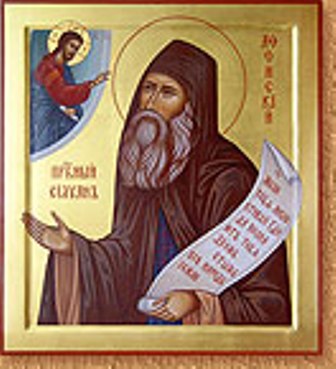
Athos is a very interesting place, because even your stay there for a little time teaches you a lot about the spiritual reality and just being there improves seriously ones spiritual life. Reaching the Russian monastery, I was stunned by the Beauty and size of the monastery, monastic yard is all green and beautiful there is a spring with water in the form of flower in front of monastic doors, the sideview of sea coast and the stones also left a bright mark in my mind.
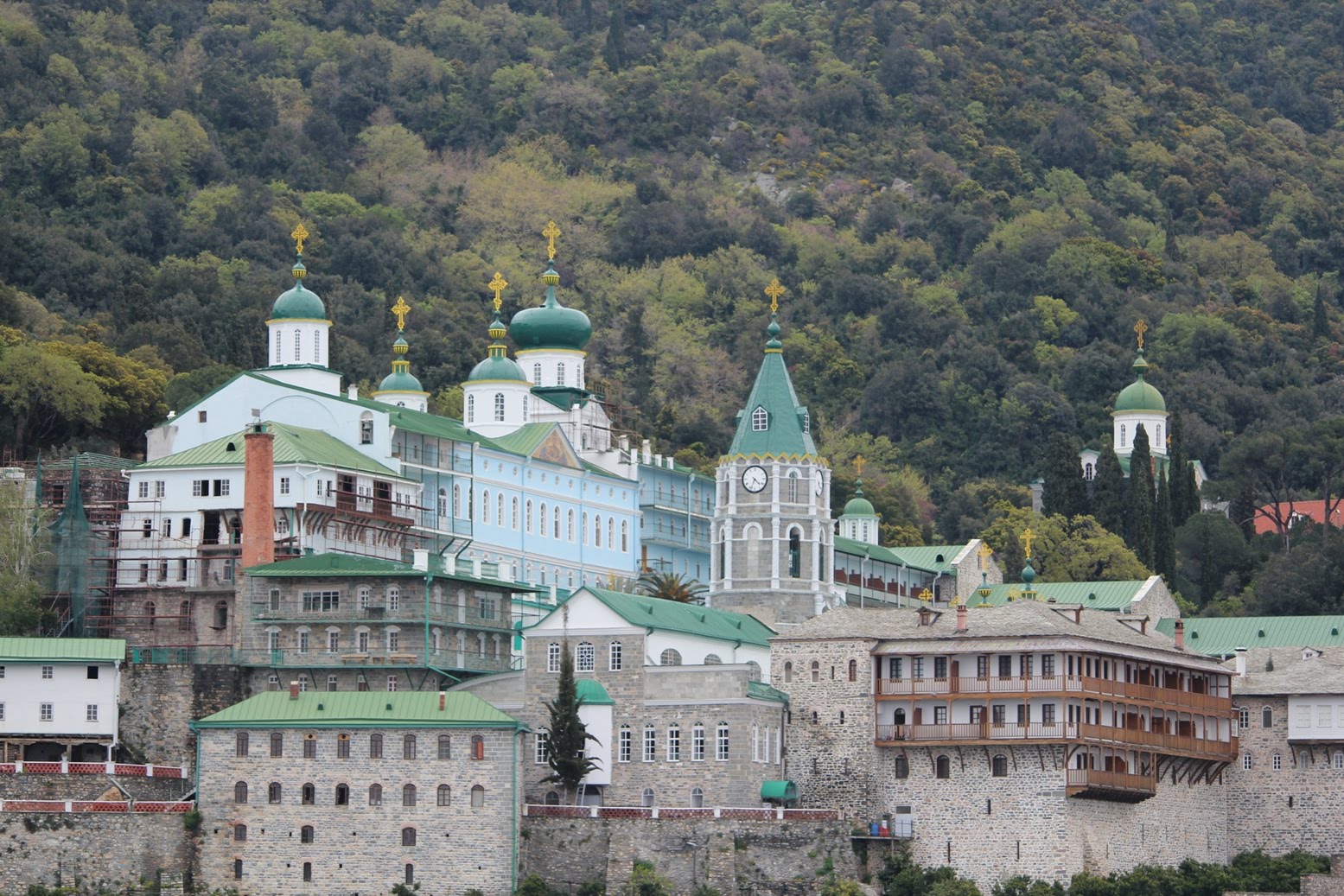
st. Panteleimonos monastery is known in whole Athos with its strong rules and ascethism, we asked if it is possible to sleep a night in the monastery but was told we need to do a one day in advance reservation to stay there (which by the way is a good thing because that way the brotherhood is not interferred by monastic guests but prepared to receives them). In the small Church nearby the bell-tower there are holy saint relics of about at least 200 saints!!! We had the Chance to see the Holy relics just to mention few of the Holy Relics of the monastery (the right hand of great martyr Panteleimon, the head of Saint Cosmas and Damian, relics of saint Seraphim of Sarov, head of saint Siluan of Athos, relics of many hermit saints, relics of Saint Basilius the Great, Saint Grigorius and saint John of Crysostom).
As we couldn't sleep in Russian monastery, we were instructed by monk Climent if they don't accept is to go to Xenophontos. So we took the way to Xenophontos which is 3km away about 1 hour near shore walk.
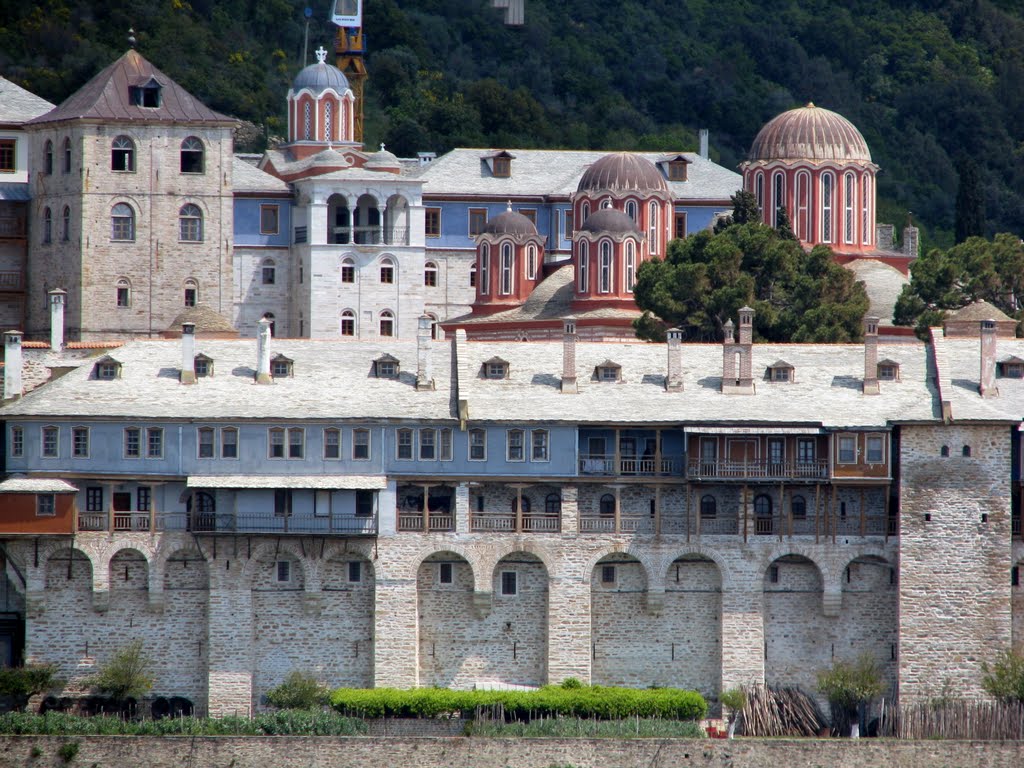
It was on the way to Monastery that I learned Xenophontos's heavenly protector is my saint George ( Georgi / Georgius), I was very happy to learn that because I already felt a bit of regret I still haven't venerated my saint protector on Holy Mount Athos.
Reaching the monastery we saw on the monastic door a monk going out of the monastery and asked him if we can stay for the night, the monk which we later learned is called Prodromos was very hospitable and accepted and accomodated us. I went to the monastic Church where still there was an Acathist ongoing in glorification of The Holy Mother of God. The saint who founded Xenophontos Μονή Ξενοφώντος is saint Xenophont. The monastery is very beatiful just like all the rest of Holy Athos monasteries. Monk Prodromos, who was mostly kindly to us give us food even though the monks had already had their dinner earlier as we were in the monastery around 21:00 at noon. Talking about time it is notable to say in Athos, they use Byzantine time which is +3 hours to Greek time, meaning we were in monastery around midnight Byzantine time (as this is early the sun was going to its sunset). Xenophontos is famous with its two miracle making icons of Saint George and The Holy Mother of God, I greatest holy relic kept in monastery is the right hand of saint George. On next day the morning service started in 4 o'clock early in morning before sunrise, we went for service around 5:00 because we couldn't get up at time, the Church bell rings around 03:50 in morning! and then on a couple of times bells at the end of morning service right before holy liturgy and whenever they serve an Acathist. In Summer morning services in holy mount athos start everyday in 04:00 (7 byzantine time) and in 03:00 (08:00) in Winter time. Everyday Holy Liturgy is served in Holy Mount Athos in every monastery and monks have an evening service starting exactly in 17:00. I would skip here to explain the Church atmosphere and the spirituality because this cannot be retold but has to be experienced. The Holy Liturgy ended around 08:00 and the monks rests for about an hour until 09:00 when the monks had an Acathist until 09:30 in the second old Church whose wall paintings dates backs probably as early as 13 or 14 century. After the Acathist, we were invited for a breakfast which was scarce but delicious. During we ete a text was red from the Ancient Paterik (The Living instructions of the Ancient time Abbas hermit saints).
After the breakfast, I had a coffee (in the guest-room) there is a free-coffee machine 🙂
We had chat with few other Greek pilgrims, and one of the Greeks was especially hospitable with us, he brought us and show us the small monastic fabric where all kind of wooden things are produced by few monks and layman (in that number icons are built there monastic chairs – tables, Church wooden ornaments etc.). We were shown by this kind greek the monastic ossuary, the monastic greenhouses, the monastic graveyard. I later learned this Greek has so special attitude to us Bulgarians, because he is architect and he was working in Rila Monastery as architect for a while while still atheist and after that when he came to Greece he believed in God thanks to the prayers of the greatest Bulgarian saint John of Rila.
After Xenophontos last monastery we visited Dochiariou monastery which is honor of Archangel Michael.
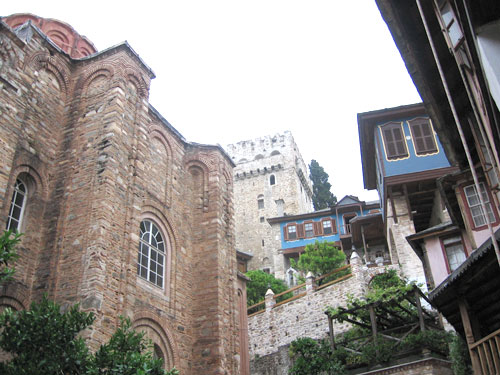
This monastery most holy relic is the infamous holy icon of The Theotokos SkoroPoslushnica (Quickly Hearing), the icon is called like this because it hears and answers the prayers of whoever prays in a very quickly manner.
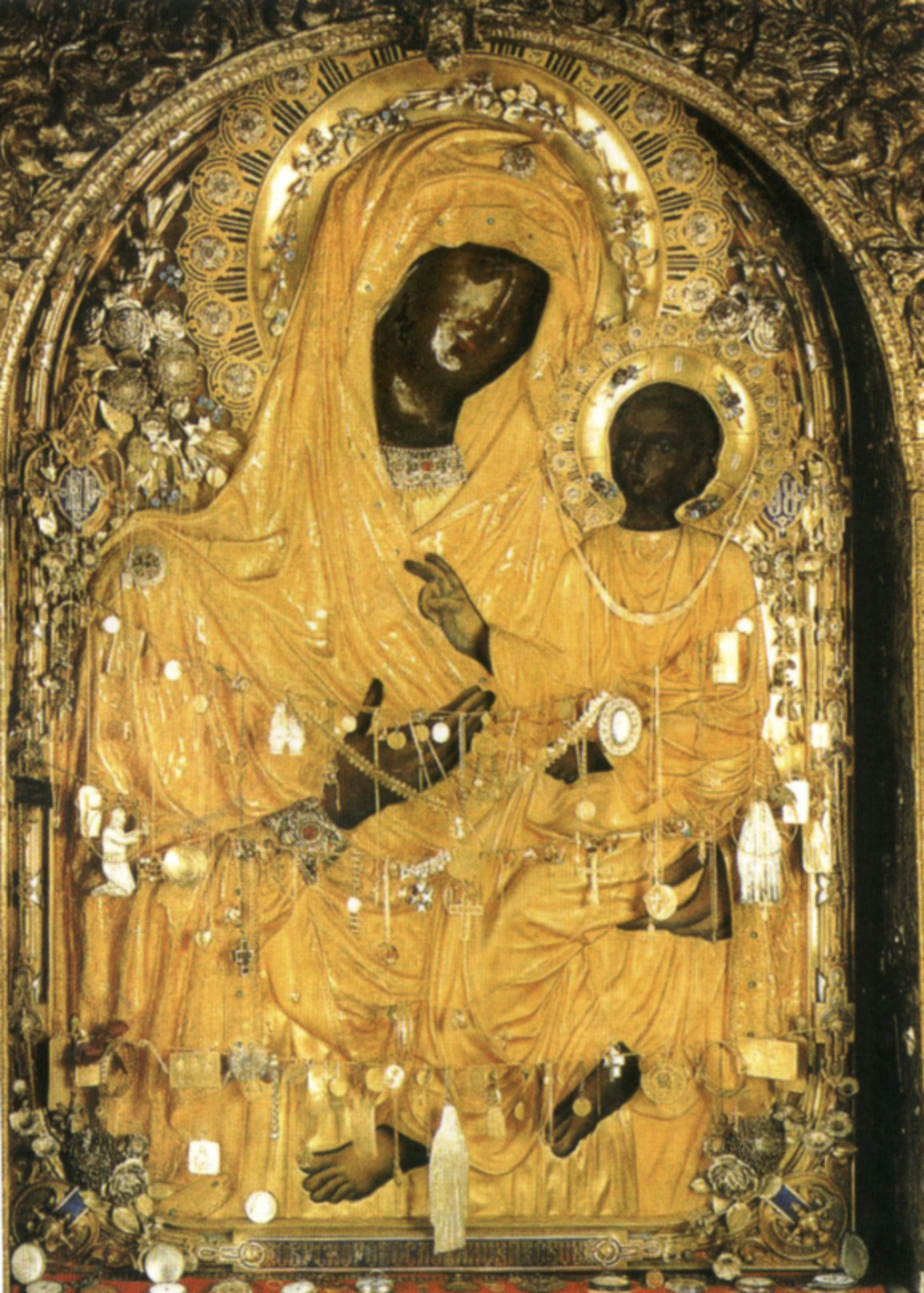
The monks in this monastery was very active, we saw some preparing wine from grapes, others doing some construction work, the monastic icon was locked in a special room in a small chapel in front of the monastic Church which was also locked, so by God's grace we asked a monk to open for us. The monk who keeps the key of the icon gave the key to a small 10 years old kid which unlocked for us and we prayed in front of the Most Holy Virgin. The grace this holy icon emits is just amazing the love and piece you feel is unsaid, I think one can feel that even by seeing the icon here in that post. A small note to make here is the pictures I've put in this post are not mine but are from the Internet and I do not hold copyright for them, thanks to whoever made the pictuers and I hope they were made with a blessing.
If I'm not mistaken Dochiariou is famous with that due to the prayers to the Archangel Michael (a warrior Angel), the Archangel drive back the invasion of the Arabs to Athos, there is also an icon in front of monastery showing this scene. It was impressive that in this monastery, there were a lot of kids helping the monks I saw at least 5 kids. I got the impression it is like a monastic tradition that kids are welcomed and help there since a long time.
Finally after spending some 2 graceful hours in Dochiariou and walking through and seeing the interesting and beatiful monastic walls and buildings architecture, flowers etc. we left off and waited for the ship Ourenopolis to come to monastic port. The ship came take us and after two more stops on Zographou port and Hilandar Serbian Monastery it is a curious fact that Hilandar used to inhabited with Bulgarian abbot and Bulgarian monks for about 80 years.
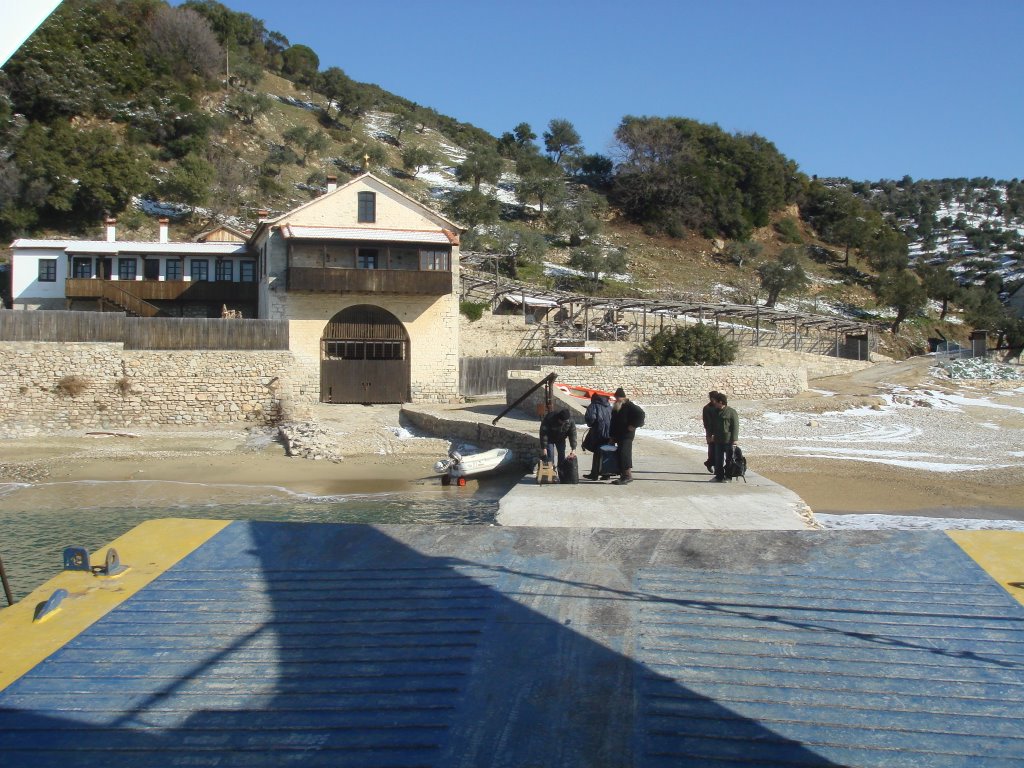
In the ship we had a small chat with monk Makarious which is a monk in the Zographou St. Martyr George Bulgarian Monastery. We were sent by the Holy Mother of God bt few dolphins sailing after the boat and doing water jumps in grace and joy.
Love for Holy Mount Athos is strongly into my heart into even this moment when I write this article. Actually to be honest I was unwilling to leave this piece of earthly paradise. I yearn to be there again soon when the Mother of God Holy Virgin Mary lets me to.
![]()
